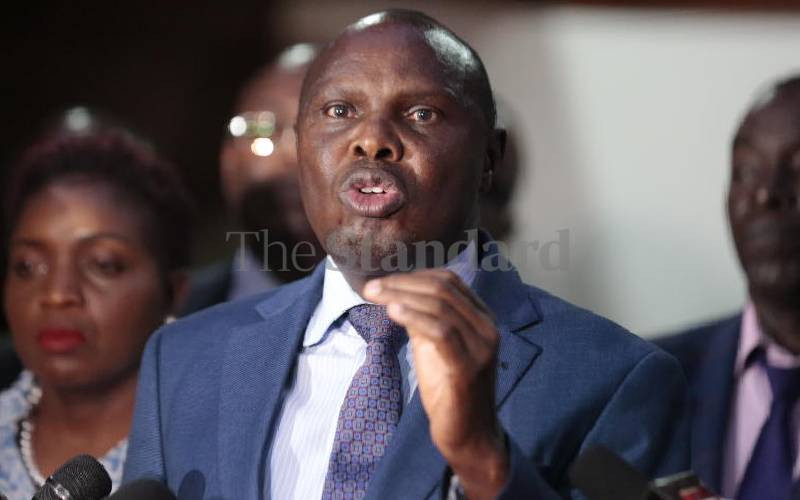Kenya's public sector has for quite a long time been characterised by real or perceived gross inequities and unfairness pay structure. This is as a result of parallel and overlapping salary policies and guidelines, which propagated unprecedented wage differences.
In 2013, the Salaries and Remuneration Commission (SRC) commissioned a comparative study on public-private sector wage differentials in Kenya. The study, conducted by the Kenya Institute for Public Policy Research and Analysis (Kippra), revealed glaring wage disparities, both vertical and horizontal, within public sector.
Further the study revealed the highest paid in the civil service earns a basic salary that is 98 times higher than the lowest. A more worrying finding from the study was the sector-specific wage differences. A typical example is the disparity in the salary paid to two or even three government accountants, legal practitioners, health workers, researchers or drivers working in separate public institutions.
No wonder the question of equitable pay has over the years dominated the public service with industrial unrest, low staff morale resulting in poor services and output becoming the order of the day.
It is for this reason that the country needs to carry out pay reforms. Indeed, a key recommendation from the SRC study emphasised that "the Government should develop standardised frameworks for determining terms and conditions of employment across the entire public sector and remunerate jobs of the same value with the same pay range in accordance with the principle of 'equal pay for work of equal value', and target output (given productivity) as an instrument to enhance pay".
Central to this recommendation is the principle of comparable worth. Given the ills facing the Kenyan public sector wage structure, it deserves attention in its own right. Arising from job evaluation, comparable worth, in this case, follows that jobs within the Government are rated, and points assigned according to characteristics such as the necessary knowledge and skills, mental demands, accountability, and working conditions. Jobs scoring the same points will then be paid the same, regardless of the pay differentials that might prevail in the market.
Simply put, comparable worth emphasises that professionals who perform work of the same value in an organisation should receive comparable levels of compensation.
Once firmly entrenched, comparable worth of jobs will help create a more favourable work environment for career advancement and job satisfaction, and link public sector pay to productivity and output, thus laying a strong foundation for a more vibrant economy.
For a country that is undergoing a major period of reconstruction and ambitiously investing in massive development, within the context of globalisation, it seems obvious that it needs to invest in its public servants to drive development in general. This is the path countries like Germany, Japan, South Korea and Taiwan took to become highly developed economies.
For Kenya to be a high-income nation, we must be able to compete on a regional and global stage to attract investments and trade. The foundation for such a high-income economy lies in a globally competitive, creative and innovative workforce.
This is why we need to bring about a level playing field that will free the talent that has been suppressed by pay imbalances over the last five decades. This is important if indeed we want to make our public service more creative and productive. If we truly believe that our workers are the most valuable resource, we should make every effort to pay them in a way comparable to their true worth.
 The Standard Group Plc is a
multi-media organization with investments in media platforms spanning newspaper
print operations, television, radio broadcasting, digital and online services. The
Standard Group is recognized as a leading multi-media house in Kenya with a key
influence in matters of national and international interest.
The Standard Group Plc is a
multi-media organization with investments in media platforms spanning newspaper
print operations, television, radio broadcasting, digital and online services. The
Standard Group is recognized as a leading multi-media house in Kenya with a key
influence in matters of national and international interest.
 The Standard Group Plc is a
multi-media organization with investments in media platforms spanning newspaper
print operations, television, radio broadcasting, digital and online services. The
Standard Group is recognized as a leading multi-media house in Kenya with a key
influence in matters of national and international interest.
The Standard Group Plc is a
multi-media organization with investments in media platforms spanning newspaper
print operations, television, radio broadcasting, digital and online services. The
Standard Group is recognized as a leading multi-media house in Kenya with a key
influence in matters of national and international interest.









